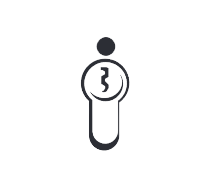
Proizvod je dostupan:
Autor:
Izdavač:
ISBN:
Godina izdanja:
Broj stranica:
Težina:
Tip uveza:
Prevod sa:
NE
Tokača Mirsad
Istraživačko dokum...
9789958954450
2012
4 knj.
6990
tvrdi
-
Bosanska knjiga mrtvih
The Bosnian Book of the Dead
Tokača Mirsad
Historical interpretation of conflicts in the world and in the Balkans abound with examples of such rough estimates and unfounded interpretations, which become, with the passage of time, fertile soil for fostering myths about the sole and exclusive suffering of one’s own community. If we agree that the purpose of every investigation is an attempt to reach truth and gain new or deeper insight, then the first question we inevitably have to ask ourselves is, do we know, at least approximately, how many people were killed or went missing during the recent war. On the eve of our research one could hear in the daily political narrative the figures related to the Bosniak casualties had reached app. 250,000, Serb casualties app. 90,000, and Croat about 50,000 (the so-called Others were not included), which reached the total of almost 400,000 casualties of the war in Bosnia and Herzegovina.
The absence of rational dialogue, and
the preponderance of confrontations and manipulations with numbers of “one’s
own“ victims, without any empirical research and documented facts, together
with the fact that some sources of information were closed, i.e. monopolised,
was an additional element that fostered deeper disagreements, contributed to a
heated political atmosphere and left a situation ripe for the instigation of
new suspicions, fears and conflicts. This is why our basic intention was to try
to contribute to the change of model of shaping our historical memory, with the
foundations that would incorporate the values which would not permit
manipulations and discrimination of the war-related victims. On the other hand,
we had in mind the importance of the problems relating World War II victims
that had burdened the society of the former Yugoslavia all the way until after
the recent war, which was to great extent one of the elements used to inspire
the conflict in the 1990s.
The naming of the 95,940 victims marks
a break in the Balkans culture and practice of seeing the dead and the
disappeared as mere numbers. The book plays a crucial role in the creation of
collective memory of war casualties, makes the practice of haggling over the
number of victims redundant and enables the region’s states to establish
safeguards and guarantees against the repetition of war crimes, by individually
naming and acknowledging each victim. Naming of the victims proved to be a
source of great strength in the process of reconciliation and coming to terms
with the past.
The Bosnian Book of the Dead is a
monument to the people of Bosnia and Herzegovina who lost their lives or who
disappeared during the war (1991- 1995). It is the only shared monument to the
killed or disappeared citizens of Bosnia and Herzegovina, irrespective of their
ethnicity, religion, political, military or social belonging. By virtue of its
detail and the quality of its content, it played, mainly through research and
public presentation of the findings, a crucial role in the Bosnian Book of the
Dead becoming the most comprehensive and reliable registry of human losses
suffered in the Republic of Bosnia and Herzegovina.
Additionally,
quantitative data analysis is focused on several most significant dimensions of
human losses, and primarily on: Statistical overview of the total number of
killed/missing victims of war; Time distribution of human losses; Human losses
according to their status (civilians v. soldiers); Gender structure of the war
casualties; Structure of the victims of war by ethnic background; Structure of
the victims of war by age; Human losses of members of military units; Spatial
distribution of human losses, both at the level of Bosnia and Herzegovina, and
in municipalities/regions.
Podijeli stavku :

Opis proizvoda
Historical interpretation of conflicts in the world and in the Balkans abound with examples of such rough estimates and unfounded interpretations, which become, with the passage of time, fertile soil for fostering myths about the sole and exclusive suffering of one’s own community. If we agree that the purpose of every investigation is an attempt to reach truth and gain new or deeper insight, then the first question we inevitably have to ask ourselves is, do we know, at least approximately, how many people were killed or went missing during the recent war. On the eve of our research one could hear in the daily political narrative the figures related to the Bosniak casualties had reached app. 250,000, Serb casualties app. 90,000, and Croat about 50,000 (the so-called Others were not included), which reached the total of almost 400,000 casualties of the war in Bosnia and Herzegovina.
The absence of rational dialogue, and
the preponderance of confrontations and manipulations with numbers of “one’s
own“ victims, without any empirical research and documented facts, together
with the fact that some sources of information were closed, i.e. monopolised,
was an additional element that fostered deeper disagreements, contributed to a
heated political atmosphere and left a situation ripe for the instigation of
new suspicions, fears and conflicts. This is why our basic intention was to try
to contribute to the change of model of shaping our historical memory, with the
foundations that would incorporate the values which would not permit
manipulations and discrimination of the war-related victims. On the other hand,
we had in mind the importance of the problems relating World War II victims
that had burdened the society of the former Yugoslavia all the way until after
the recent war, which was to great extent one of the elements used to inspire
the conflict in the 1990s.
The naming of the 95,940 victims marks
a break in the Balkans culture and practice of seeing the dead and the
disappeared as mere numbers. The book plays a crucial role in the creation of
collective memory of war casualties, makes the practice of haggling over the
number of victims redundant and enables the region’s states to establish
safeguards and guarantees against the repetition of war crimes, by individually
naming and acknowledging each victim. Naming of the victims proved to be a
source of great strength in the process of reconciliation and coming to terms
with the past.
The Bosnian Book of the Dead is a
monument to the people of Bosnia and Herzegovina who lost their lives or who
disappeared during the war (1991- 1995). It is the only shared monument to the
killed or disappeared citizens of Bosnia and Herzegovina, irrespective of their
ethnicity, religion, political, military or social belonging. By virtue of its
detail and the quality of its content, it played, mainly through research and
public presentation of the findings, a crucial role in the Bosnian Book of the
Dead becoming the most comprehensive and reliable registry of human losses
suffered in the Republic of Bosnia and Herzegovina.
Additionally,
quantitative data analysis is focused on several most significant dimensions of
human losses, and primarily on: Statistical overview of the total number of
killed/missing victims of war; Time distribution of human losses; Human losses
according to their status (civilians v. soldiers); Gender structure of the war
casualties; Structure of the victims of war by ethnic background; Structure of
the victims of war by age; Human losses of members of military units; Spatial
distribution of human losses, both at the level of Bosnia and Herzegovina, and
in municipalities/regions.
Najpopularnije iz kategorije
više
-5%
Porijeklo
Stanišić Saša

-5%
Ljubavnici Casablanke
Tahar Ben Jelloun

-5%
Vidimo se u augustu
Gabriel García Márquez

-5%
Zajednička čajanka
Kamali Marjan

-5%
Krug
Suman Defne

-5%
Vrata tajni
Umit Ahmet

-5%
Vjeverica ne zna reći ne
Isern Susanna

-5%
Ja sam
Uzunović Damir

-5%
Nebom teku rijeke
Safak Elif

-5%
Tajno pismo
Other

-5%
Pariški maraton
Uzunović Damir

-5%
Pamtim to kao da je bilo danas, drugo izdanje
Other

